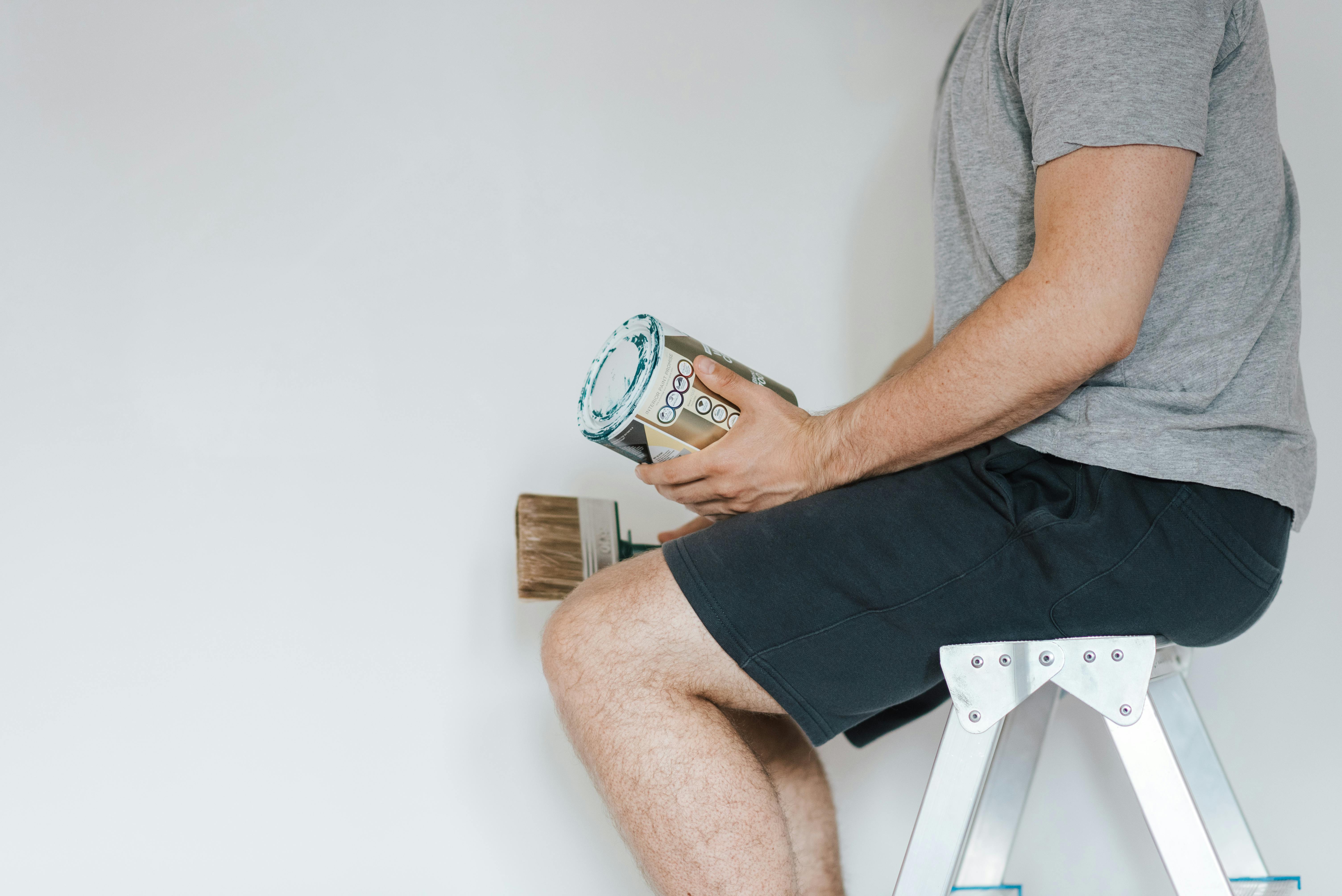White Distilled Vinegar is a powerful and natural cleaner that can be used to clean many of your surfaces. It is a natural and cost-effective alternative to many of the more expensive cleaning products on the market. Vinegar is non-toxic and can be used safely around children and pets. It has a strong odor, but that dissipates quickly once it dries. Vinegar can be used to clean surfaces in your home, including windows, countertops, floors, bathrooms, kitchens and much more. In this article we will discuss how you can use white distilled vinegar for cleaning in various ways.Using white distilled vinegar for cleaning is an incredibly effective, safe and cost-efficient way to clean your home. Vinegar is a natural acid, which makes it great for cutting through dirt, grime, grease and even calcium deposits. It’s also a natural disinfectant and can be used to sanitize hard surfaces like countertops, sinks, toilets and tubs. Additionally, since it’s non-toxic and biodegradable, it’s safe to use around children and pets. In addition to its cleaning properties, vinegar can help reduce static cling in clothes when used during the wash cycle and can help remove soap residue from laundry. The fact that all of these advantages come at such a low cost make vinegar an excellent choice for cleaning.
What Is White Distilled Vinegar?
White distilled vinegar is a liquid made from the fermentation of grain alcohol. It is a clear, colorless vinegar that has a sharp, acidic flavor and is used in cooking and cleaning. White distilled vinegar is one of the most common types of vinegar available and is often used in pickling, marinades, sauces, vinaigrettes, and other foods. It can also be used to make cleaning solutions or as an ingredient in homemade cleaners. White distilled vinegar has antibacterial properties, which make it a popular choice for cleaning surfaces and removing stains. It can also be used to kill weeds and even repel insects. White distilled vinegar has a long shelf life and can be stored for up to two years if kept in a cool, dry place away from sunlight.
White distilled vinegar is made from grain alcohol that has been fermented with acetic acid bacteria. The resulting liquid is then filtered to remove any impurities before being bottled for sale. The acetic acid content of white distilled vinegar varies between 5% and 8%, depending on the brand or type. Its pH level ranges from 2.4 to 3.4, making it slightly acidic but not as strong as other types of vinegar such as apple cider or balsamic vinegars.
Proper Usage of White Distilled Vinegar for Cleaning
White distilled vinegar is an effective and natural cleaning agent. It can be used to clean a variety of surfaces, such as windows, countertops, sinks, and tiles. Vinegar is also great for removing grease and grime from kitchen appliances. Additionally, it can be used to disinfect surfaces and remove odors.
To use white distilled vinegar for cleaning, start by diluting it with an equal amount of water in a spray bottle or bucket. This will help reduce the strength of the vinegar, so that it won’t damage any surfaces. Then use the solution to spray or wipe down the desired area. For tougher stains or buildup, apply undiluted vinegar directly to the surface and let it sit for a few minutes before wiping it away with a damp cloth.
It’s important to note that white distilled vinegar should never be used on marble countertops or other porous stone surfaces because it can cause discoloration and damage the finish. Additionally, use caution when using vinegar on wood floors as it could cause discoloration over time if not diluted properly with water.
When using white distilled vinegar for cleaning purposes, always make sure to wear gloves and keep your windows open to allow ventilation in order to reduce any strong odors from lingering in the air. Additionally, take care that any food preparation areas are thoroughly washed with soap and water after being cleaned with vinegar as it may leave behind a lingering taste if not completely removed from surfaces. With proper usage and precautions taken, white distilled vinegar can be an effective cleaner in any home setting.
How to Make a Cleaning Solution with White Distilled Vinegar
White distilled vinegar is a natural and cost-effective way to clean and disinfect surfaces. It can be used alone as a cleaning solution or combined with other natural ingredients such as baking soda, essential oils, and lemon juice. To make your own cleaning solution with white distilled vinegar, gather the following items: white distilled vinegar, water, spray bottle, essential oils (optional). Begin by filling your spray bottle halfway with white distilled vinegar. Then add water to fill the rest of the bottle. Add 5-10 drops of essential oil if desired for an added scent (optional). Shake well to mix the ingredients and your homemade cleaning solution is ready for use!
White distilled vinegar is an excellent cleaner because it has acidic properties that help break down dirt and grime on surfaces. It can be used on any non-porous surface in your home such as countertops, sinks, toilets, showers, floors, and windows. You can also use it to clean appliances like refrigerators and ovens. When using the homemade cleaning solution with white distilled vinegar on any surface in your home, be sure to test it in an inconspicuous area first to make sure there are no adverse reactions or discoloration.

Home Areas Cleaned with White Distilled Vinegar
White distilled vinegar is an effective and natural cleaner for a variety of areas around the home. It can be used to clean almost any surface, including countertops, floors, bathrooms, and windows. Vinegar is also a powerful deodorizer and can be used to freshen carpets, rugs, and other fabrics. Additionally, it can be used to remove soap scum from tubs and showers and eliminate hard water stains.
Vinegar is an eco-friendly choice for those who are looking for a way to clean their homes without using harsh chemicals or cleaners. It is non-toxic and safe for use around children and pets. In addition to being non-toxic, vinegar is also affordable and easy to use. All you need is white distilled vinegar, a spray bottle or cloth, water, and some elbow grease.
Vinegar can be used to clean a variety of surfaces in the home such as floors, countertops, appliances, walls, windowsills, cabinets and more. To clean these surfaces simply make a mixture of white distilled vinegar with water in a spray bottle or bucket (1 part vinegar: 3 parts water). Spray or wipe down the desired surface then let it sit for 10 minutes before wiping away with a damp cloth or sponge.
Vinegar can also be used as an all-purpose cleaner throughout the home such as bathrooms where it can be used on toilets (both inside the bowl and outside), bathroom fixtures such as sinks and faucets as well as showers, tile grout lines, bathtubs and more. Simply mix 1/2 cup white distilled vinegar with 1 gallon of warm water in a bucket then dip in a mop or sponge to start cleaning.
White distilled vinegar can also be used to remove built up soap scum from tubs and showers that have been neglected over time just by spraying it onto the affected area then wiping away with a damp cloth or sponge afterwards. Additionally it can be used on hard surfaces such as tiles that have been affected by hard water stains where it will help break down the deposits quickly without leaving any residue behind after wiping away with a damp cloth or sponge afterwards.
Safety First
When using white distilled vinegar for cleaning, it’s important to take safety measures. Wear gloves and eye protection when handling the vinegar, and work in a well-ventilated area. If you accidentally get vinegar in your eyes, rinse with plenty of cool water. Also, never mix vinegar with bleach or any other cleaners as this can create a hazardous gas.
Choose the Right Vinegar
Make sure you use white distilled vinegar for cleaning purposes. White distilled vinegar is usually cheaper and easier to find compared to other types of vinegar. It’s also milder than other varieties like apple cider or balsamic vinegars, which are not suitable for cleaning tasks.
Dilute the Vinegar
Although white distilled vinegar can be used on its own, it’s best to always dilute it with water first. A 50/50 solution of water and white distilled vinegar is ideal for most cleaning tasks. The combination will help prevent damage from occurring to surfaces like wood and stone that are sensitive to acidic substances like vinegar.
Test First
Before using the diluted mixture on any surface, test a small inconspicuous area first to make sure there won’t be any discoloration or damage. This is especially important if you’re using the mixture on delicate surfaces like marble or hardwood floors.
Storage and Reuse
Once you’ve used the diluted white distilled vinegar solution for cleaning, store it in an airtight container for future use. This will help prevent bacteria from growing in the mixture and ensure that it remains effective for future cleanings.
Be Mindful of Odors
White distilled vinegar has a strong odor that can linger long after you’ve finished cleaning with it. To remove odors from fabrics like carpets and curtains, mix baking soda into your diluted solution before use. This will help neutralize the odor and leave your home smelling fresh after you’re done cleaning.
White Distilled Vinegar and Other Types of Vinegars
White distilled vinegar is a type of vinegar made from grain alcohol, such as corn or wheat, which has been fermented and then distilled. It is light in color and has a sharp, acidic flavor. White distilled vinegar is the most commonly used type of vinegar in the United States and is widely used in cooking and baking. It can also be used for cleaning, pickling, and other household uses.
Other types of vinegars include apple cider vinegar, balsamic vinegar, red wine vinegar, rice vinegar, malt vinegar, champagne vinegar, sherry vinegar, and white wine vinegar. Each type of vinegar has its own unique flavor profile and characteristics that make it suitable for specific recipes or uses. Apple cider vinegar has a sweet-tart flavor profile with notes of apples. Balsamic vinegars tend to be dark in color with a sweet-tart flavor profile that can vary depending on the aging process used to produce them. Red wine vinegars have a slightly fruity flavor profile with notes of red grapes. Rice vinegars are milder than other types of vinegars with a slightly sweet taste. Malt vinegars have an intense malt flavor with notes of barley or rye malts. Champagne vinegars are light-bodied with an acidic finish and notes of citrus fruits. Sherry vinegars are made from fortified wines and have a slightly nutty flavor profile with notes of dried fruits. White wine vinegars are light-bodied with a tart taste and usually have hints of green apple or pear aromas.
In summary, white distilled vinegar is the most commonly used type of vinegar in the United States due to its versatility in cooking and baking as well as its use for cleaning around the home. There are many other types of vinegars available that each have their own unique flavors which make them suitable for different recipes or uses such as pickling or adding to salads or vinaigrettes.

Conclusion
White distilled vinegar is a great multipurpose cleaning agent. It can be used to clean surfaces, remove stains, and even help keep germs at bay. Best of all, it is affordable and easy to find at most grocery stores. While white distilled vinegar should not replace traditional cleaning products entirely, it can be a great addition to your cleaning arsenal. Using white distilled vinegar for cleaning can save time and money while also providing a safe and effective way to keep your home clean and tidy.
Overall, white distilled vinegar is an excellent option for cleaning around the home. It is affordable, easy to find, and effective at removing dirt and grime. Additionally, it’s safe for use around children and pets when used according to the manufacturer’s instructions. If you’re looking for an alternative to traditional cleaning products, then white distilled vinegar could be just the thing you need.

